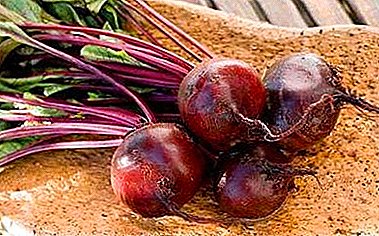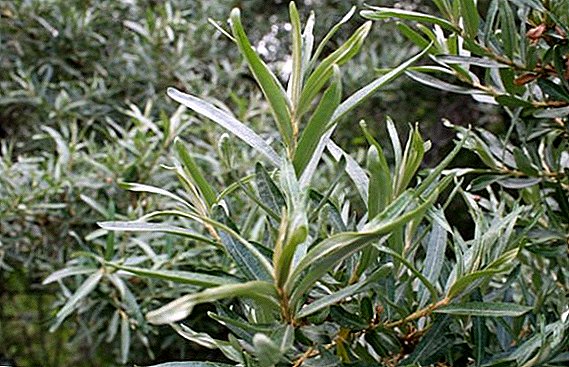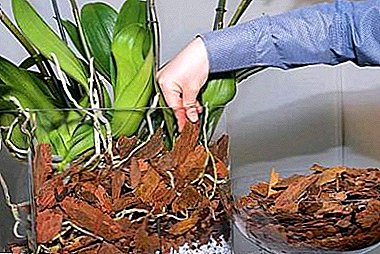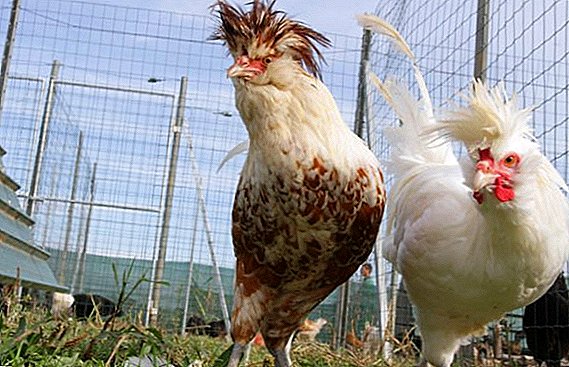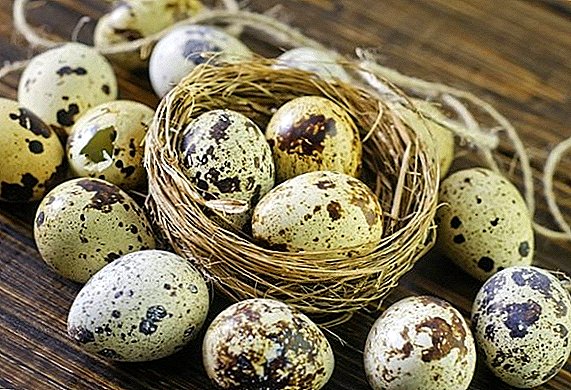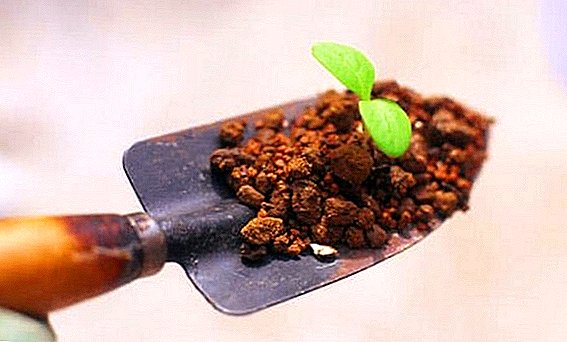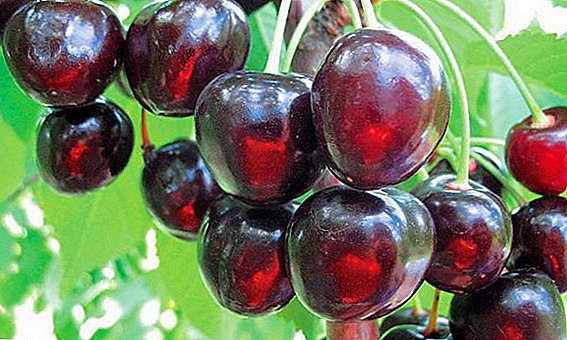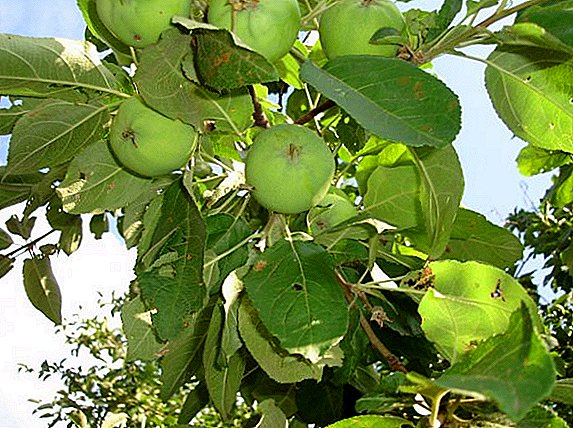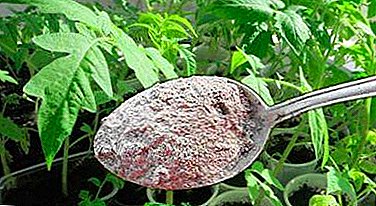
Among organic supplements for tomatoes, wood ash is one of the most popular and most affordable.
Most of the suburban areas have houses with a stove, in the process of burning which ash accumulates, many gardeners burn dry grass, potato tops, cut branches during the season - this ash is also an excellent fertilizer. You will learn more about the rules of feeding with ashes of tomato seedlings in the article, in addition, familiarize yourself with the methods of feeding.
What is the benefit of such a fertilizer at home for tomatoes?
The composition of the ash varies greatly depending on what was burned. But in any case, it always contains calcium, phosphorus, zinc, potassium, as well as iron and sulfur, the percentage ratio of which varies depending on the type of plant.
- Phosphorus - absolutely necessary element with the growth of seedlings and the formation of fruits. With its shortage, the plant gives a very slow growth, the leaves are covered with pale purple spots, and when they are formed, they ripen poorly and remain small. All these problems are easily solved by applying ash fertilizers, with a sharp and heavy form - foliar spraying.
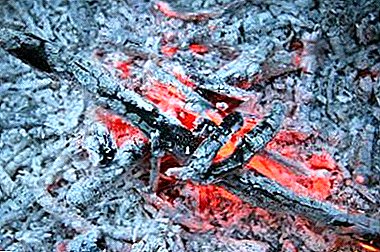 Potassium - it is especially necessary for early transplantation of tomatoes into open ground and greenhouses, as it increases the frost resistance of plants, strengthens the immune system, with a sufficient potassium content in the soil increases resistance to fungal infections, and the growth of stems increases. If the leaves of seedlings or adult plants began to curl up into a tube or turn yellow - the introduction of ash will solve this problem by saturating the soil with potassium. In ash fertilizers, it is in the form most easily absorbed by tomatoes.
Potassium - it is especially necessary for early transplantation of tomatoes into open ground and greenhouses, as it increases the frost resistance of plants, strengthens the immune system, with a sufficient potassium content in the soil increases resistance to fungal infections, and the growth of stems increases. If the leaves of seedlings or adult plants began to curl up into a tube or turn yellow - the introduction of ash will solve this problem by saturating the soil with potassium. In ash fertilizers, it is in the form most easily absorbed by tomatoes.- Calcium - necessary for the direct formation of the stem, with a shortage of it in the soil, the plant turns pale, the top bends, the root system does not develop normally. After a day or two watering ash infusion, this problem will go away, the tomatoes will begin to form normally.
- Sodium - it is especially useful when it is impossible to water the bushes every day, as it increases their drought resistance, regulating the processes of absorption and evaporation of moisture. With an acute lack of potassium leaves are covered with brownish spots.
All this and more a huge number of trace elements in the ash, a very beneficial effect on the growth and development of tomatoes at all stages of growth - from germination to fruiting bushes. The ash brought into the soil in spring is capable of providing basic nutrition for several years for tomatoes without causing any harm. Do not assume that organic fertilizers can be applied uncontrollably and in any quantities.
Too much ash in the soil can dramatically reduce its acidity, and some trace elements will be difficult for tomatoes to reach. It is not necessary to apply fertilizer from the ashes in the same year when lime was added to the soil - phosphorus in the soil will turn into a form that the plants cannot absorb.
Many gardeners are thinking whether tobacco ash can be used as a fertilizer for tomatoes. Strongly not, or in symbolic quantities. If you plan to burn pure tobacco - it will be organic fertilizer, to which tomatoes will respond with gratitude. The ashes of cigarettes, in addition to tobacco, contain harmful tar and poisons that can weaken and even destroy the plant.
Methods of introduction of the additive
Ash can be used at all stages of tomato cultivation.
Seed preparation
Half a tablespoon of fertilizer is poured with a glass of slightly cooled boiling water and insist from several hours to three days, after which it is filtered through several layers of gauze. In the resulting solution immersed seeds for several hours, then dried. After this procedure, the seeds sprout faster, the percentage of germination also increases.
Soil application
 In the ground prepared for seedlings, they add at the rate of 1 cup of sifted ash per kilogram of soil.
In the ground prepared for seedlings, they add at the rate of 1 cup of sifted ash per kilogram of soil.
When the tomatoes came up - fertilizing can be continued by watering the seedlings with ash fertilizer. It can be prepared in two ways - a simple solution and infusion. When preparing an infusion, ash within 100 grams is stirred in warm water and infused for a day or two - this infusion can be used to water adult bushes and the soil around them.
The solution is prepared a little differently - up to three glasses of sifted ash is added to a bucket of warm water, infused for several days and filtered. Once a fortnight, plants are watered with this solution - seedlings in a quarter of a glass, adult transplanted plants - about a liter per bush.
Spraying plants with ash solution
Foliar top dressing - spraying the leaves of an adult plant with a solution of ash is very useful. With a lack of phosphorus tomatoes in the bushes, they start to hurt - the leaves curl, turn yellow, slightly visible patches of purple hue appear on the lower part of the leaf, the fruits themselves slowly ripen, remain small.
Besides, such foliar application can save tomatoes from a large number of pests and diseases as a bonusTherefore, it is recommended to hold it regularly - at least once a week.
Using fertilizer when transplanting seedlings
When planting tomatoes in a greenhouse or in open ground, the use of ash in sifted form or ash fertilizer is mandatory. If the soil is acidic, heavy, before transplanting it is recommended to bring in at least three tablespoons of ash per bush. The ashes are pre-mixed with earth.
 Avoid direct contact of the roots of the plant with large amounts of ash.not mixed thoroughly with the soil - this can lead to a burn of the roots and the death or disease of the plant.
Avoid direct contact of the roots of the plant with large amounts of ash.not mixed thoroughly with the soil - this can lead to a burn of the roots and the death or disease of the plant.
Before planting tomatoes, in the spring, ashes can be added to the ground when digging - this will ease the soil and saturate it with microelements. You should not abuse it, since ash will be added during transplantation and later used for watering, but you can add a half-liter jar per square meter of soil.
Ash must be sieved before adding to the soil or to the future solution.. This will prevent heavy insoluble compounds from entering the ground.
Drying of the culture
In addition to spraying the solution with sifted ashes, you can simply powder the leaves - this can be done if there are already signs of phosphorus or potassium deficiency, and there is no ready-made solution.
Naturally, the ash will keep well the necessary time only on wet leavestherefore, tomato dressing is carried out either early in the morning, when dew is on the leaves, or by spraying them with a hose or sprayer. It is very convenient to powder the leaves using a sieve for flour - it passes precisely those fractions of ash that are necessary for tomatoes.
Storage
Since it is recommended to feed with ash in the spring, since nutrients are quickly washed out of it with water and there is practically nothing left in the soil when feeding in the fall, the question arises - how to keep the ash until spring?
When storing the only requirement - dry room. With high humidity, ash clumps and loses some nutrients., besides, it will be practically impossible to stretch it to working condition.
Plastic buckets or large containers with tight-fitting lids that prevent the ingress of moisture are ideal for storing sifted ash. If there are no such containers, you can use plastic bags without tying them too tightly so that there is air access. So the fertilizer will overwinter perfectly, even if the room in which the ash is stored is not heated all winter.
Ash feeding - universal, environmentally friendly, absolutely free and very effective fertilizer for growing any types of tomatoes. When using it, practically no other fertilizers are needed, as it contains most of the microelements necessary for tomatoes. The introduction of ash into the soil before planting and the regular use of ash infusions or solutions will significantly increase the yield of the bushes and the fruiting time.


 Potassium - it is especially necessary for early transplantation of tomatoes into open ground and greenhouses, as it increases the frost resistance of plants, strengthens the immune system, with a sufficient potassium content in the soil increases resistance to fungal infections, and the growth of stems increases. If the leaves of seedlings or adult plants began to curl up into a tube or turn yellow - the introduction of ash will solve this problem by saturating the soil with potassium. In ash fertilizers, it is in the form most easily absorbed by tomatoes.
Potassium - it is especially necessary for early transplantation of tomatoes into open ground and greenhouses, as it increases the frost resistance of plants, strengthens the immune system, with a sufficient potassium content in the soil increases resistance to fungal infections, and the growth of stems increases. If the leaves of seedlings or adult plants began to curl up into a tube or turn yellow - the introduction of ash will solve this problem by saturating the soil with potassium. In ash fertilizers, it is in the form most easily absorbed by tomatoes.